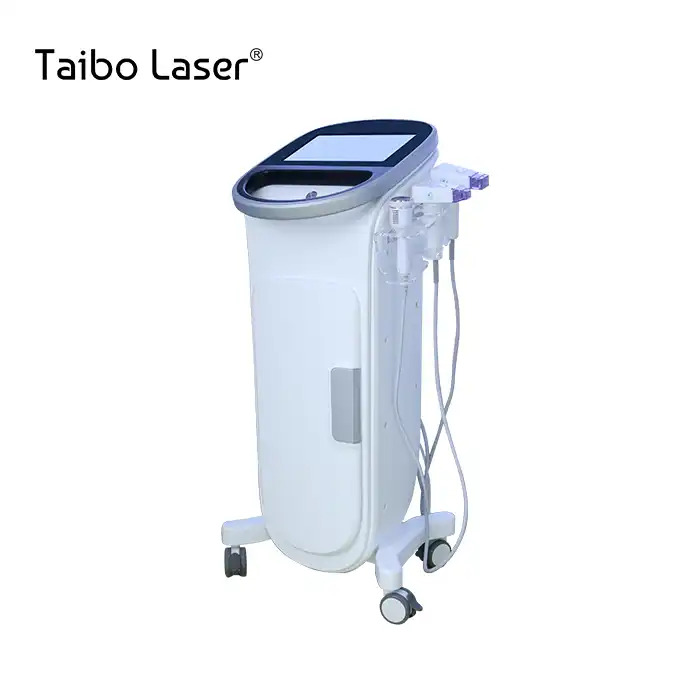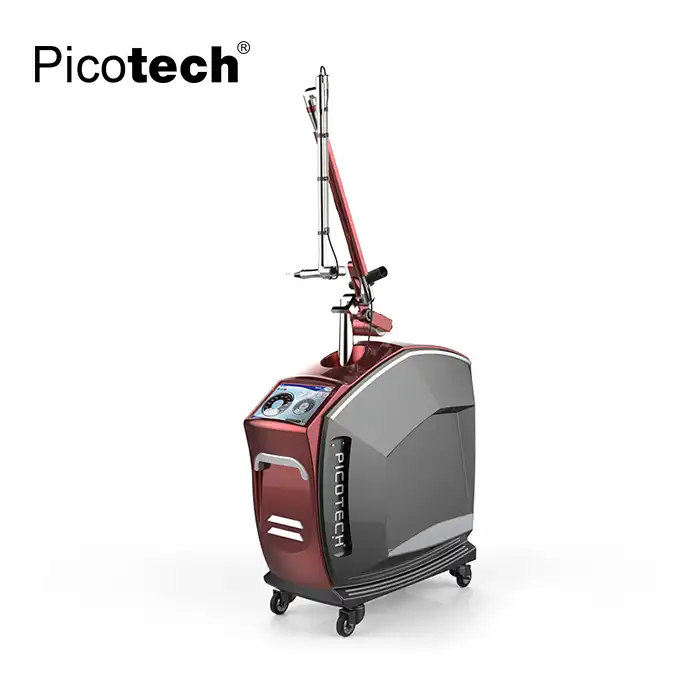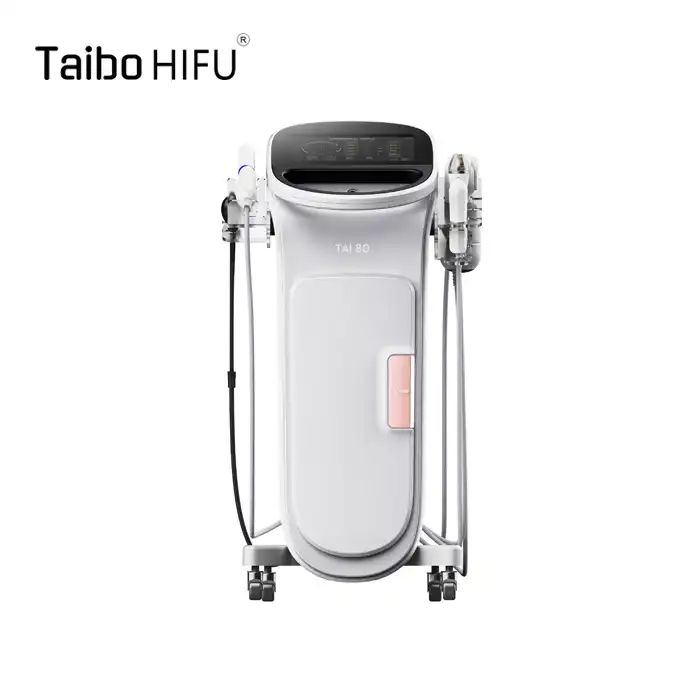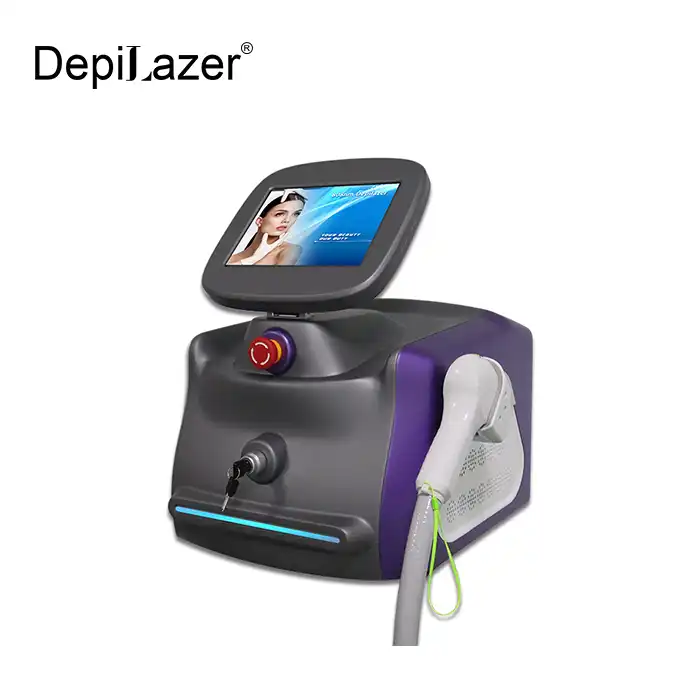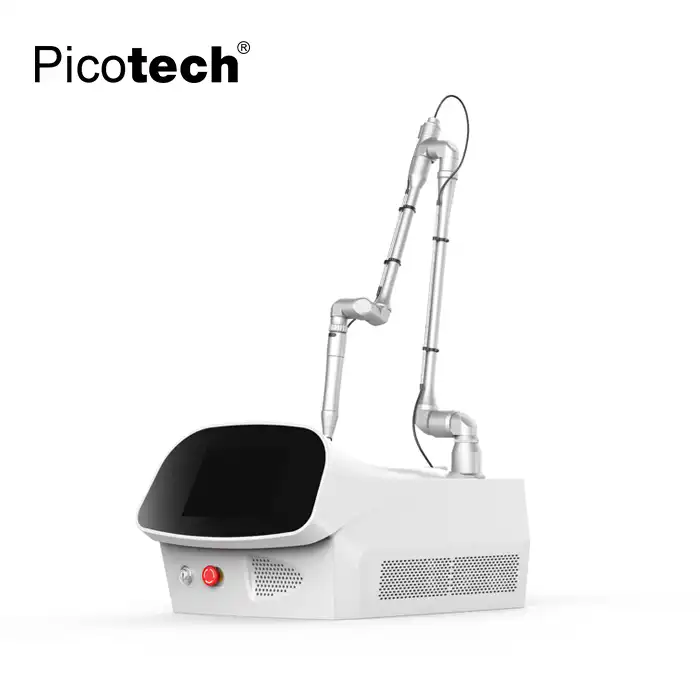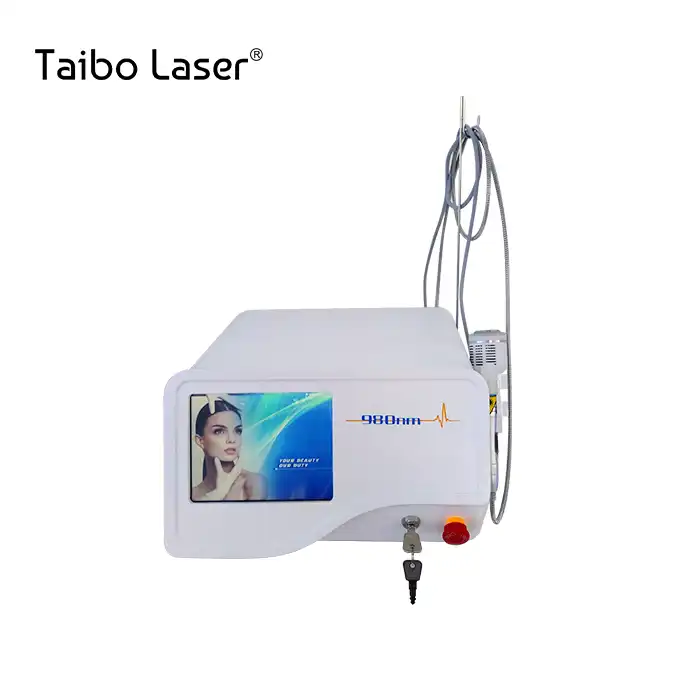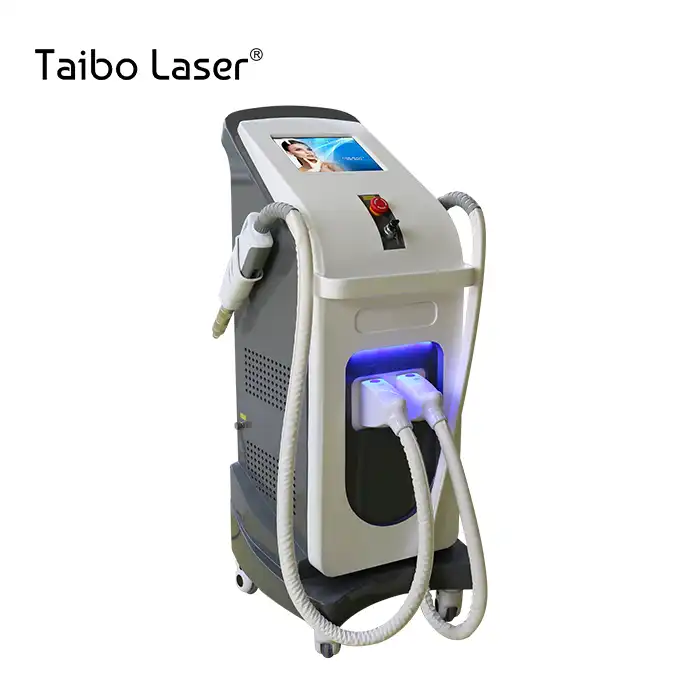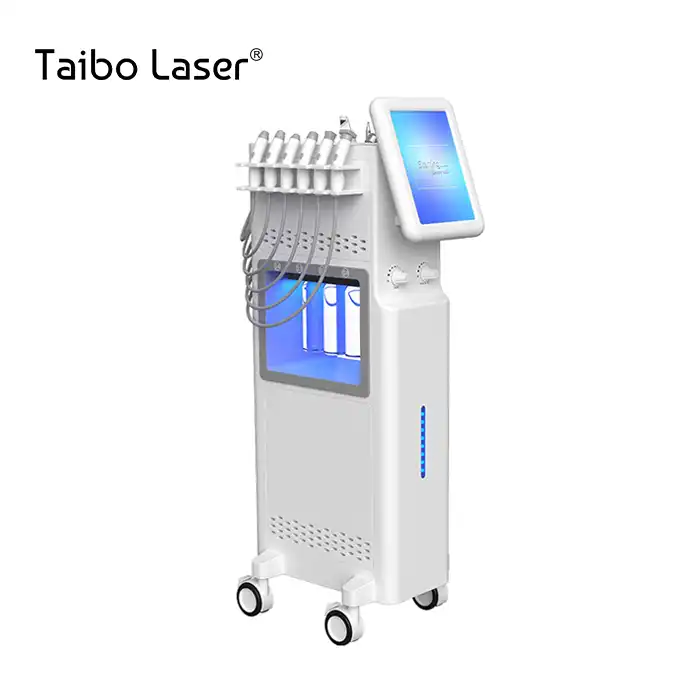
Does CO2 fractional laser really work?
2025-10-14 09:23:52
Are you struggling with stubborn acne scars that won't fade, deep wrinkles that age your appearance, or uneven skin texture that makeup can't hide? You're not alone in this frustration. The fractional co2 laser has emerged as a transformative solution for these common skin concerns, delivering proven results where traditional treatments fall short. This advanced technology works by creating controlled microscopic thermal zones in the skin, stimulating natural collagen production and triggering comprehensive skin renewal from within. If you've been wondering whether this treatment lives up to the hype, this comprehensive guide will reveal the science-backed evidence, real-world applications, and expert insights you need to make an informed decision about your skin rejuvenation journey.
Understanding How Fractional CO2 Laser Technology Works
The fractional co2 laser represents a significant advancement in dermatological science, operating on principles that fundamentally differ from traditional ablative procedures. This technology utilizes a carbon dioxide laser with a wavelength of 10,600 nanometers, which has an exceptionally high affinity for water molecules present in skin tissue. When the fractional co2 laser beam contacts the skin surface, it creates thousands of microscopic treatment zones known as Micro Thermal Zones (MTZ), each precisely controlled in depth, diameter, and energy density. These columns of thermal damage penetrate through the epidermis into the dermal layers, triggering a cascade of biological responses that lead to comprehensive skin transformation. The working mechanism involves three simultaneous processes: vaporization, coagulation, and carbonization of targeted tissue. The laser energy instantly heats water content within skin cells to temperatures exceeding 100 degrees Celsius, causing immediate vaporization and removal of damaged tissue. Simultaneously, surrounding tissues experience controlled thermal injury that stimulates fibroblast activity and initiates new collagen synthesis. The fractional co2 laser treatment pattern strategically leaves healthy tissue bridges between ablated columns, serving as biological reservoirs that accelerate healing and minimize downtime compared to fully ablative procedures. This fractional approach allows for adjustable penetration depths ranging from superficial epidermal treatments to deep dermal remodeling, making it versatile for addressing various skin concerns across different skin types and anatomical locations.
-
The Science Behind Collagen Stimulation and Skin Regeneration
Collagen production forms the cornerstone of fractional co2 laser effectiveness, transforming skin quality at the cellular level through precisely controlled thermal injury. When the laser creates micro-wounds in the dermis, the body interprets this as tissue damage requiring repair, initiating a wound-healing cascade that persists for months following treatment. Fibroblasts migrate to the treatment sites within days, synthesizing new collagen type I and III fibers that gradually replace damaged structural proteins. This neocollagenesis continues for three to six months post-treatment, with studies documenting collagen density increases of 30-50% in treated areas. The fractional co2 laser also stimulates elastin production, improving skin elasticity and reducing the appearance of sagging or laxity that characterizes aging skin. Beyond collagen synthesis, the fractional co2 laser induces comprehensive dermal remodeling through multiple mechanisms. The thermal energy disrupts aged, cross-linked collagen bundles that contribute to wrinkles and textural irregularities, allowing their replacement with organized, functional collagen architecture. Simultaneously, the treatment enhances dermal thickness, increases ground substance content, and improves capillary density, resulting in better skin hydration and nutrient delivery. The epidermis undergoes complete renewal as damaged keratinocytes are removed and replaced with healthy cells, reducing pigmentation irregularities and creating a smoother, more luminous skin surface. This multi-layered regeneration explains why fractional co2 laser results appear progressively better over several months, with optimal outcomes typically visible three to six months after treatment when neocollagenesis reaches its peak.
Clinical Evidence Supporting Fractional CO2 Laser Efficacy
Extensive clinical research validates the effectiveness of fractional co2 laser treatment across multiple dermatological applications, with peer-reviewed studies demonstrating measurable improvements in skin quality and patient satisfaction rates consistently exceeding 80%. A comprehensive systematic review analyzing data from over 30 clinical trials found that ablative fractional co2 laser treatment produced significant improvements in acne scar appearance, with average scar depth reductions of 50-70% after a series of three to four treatments. These studies employed objective measurement tools including profilometry, optical coherence tomography, and standardized photographic assessment, providing quantifiable evidence rather than relying solely on subjective patient reports. The fractional co2 laser demonstrated particular efficacy for atrophic scarring, including rolling and boxcar scars, though ice-pick scars sometimes required combination therapy for optimal results. Research examining wrinkle reduction and photoaging reversal shows equally impressive outcomes, with clinical trials documenting significant improvements in fine lines, skin texture, and overall facial rejuvenation following fractional co2 laser treatment. Histological studies confirm that these visible improvements correlate with measurable changes in dermal architecture, including increased collagen density, normalized elastin networks, and enhanced dermal-epidermal junction organization. Long-term follow-up studies spanning two to five years post-treatment demonstrate sustained improvements, suggesting that fractional co2 laser induces durable structural changes rather than temporary cosmetic effects. Patient satisfaction surveys consistently report high approval ratings, with most participants indicating they would undergo the treatment again and recommend it to others facing similar skin concerns, validating both the clinical effectiveness and real-world value of fractional co2 laser technology.
-
Comparative Analysis: Fractional CO2 Laser Versus Alternative Treatments
When compared to alternative skin resurfacing modalities, the fractional co2 laser consistently demonstrates superior efficacy for moderate to severe skin damage, though each technology offers distinct advantages depending on specific treatment goals and patient characteristics. Non-ablative fractional lasers, including erbium glass and thulium devices, provide gentler treatment with minimal downtime but require more sessions to achieve comparable results to fractional co2 laser treatment. Studies directly comparing these technologies show that fractional co2 laser produces more dramatic improvements in single treatments, with collagen stimulation approximately 2-3 times greater than non-ablative alternatives. However, the fractional co2 laser involves longer recovery periods, typically 7-14 days compared to 2-4 days for non-ablative options, making patient selection and expectation management crucial for treatment success. Chemical peels represent another alternative, with deep phenol or TCA peels historically used for severe photoaging and scarring. While these can produce significant improvements, the fractional co2 laser offers several advantages including more precise depth control, reduced risk of complications like hypopigmentation, and better outcomes for darker skin types when appropriate parameters are used. Microneedling combined with radiofrequency has gained popularity as a less invasive option, but systematic reviews indicate that fractional co2 laser treatment produces more substantial collagen remodeling and greater improvements in severe scarring, though microneedling may be preferable for mild to moderate concerns or patients seeking minimal downtime. The fractional co2 laser remains the gold standard for comprehensive skin resurfacing when significant transformation is desired and adequate healing time is available.
Specific Applications and Treatment Outcomes
The versatility of fractional co2 laser technology extends across numerous dermatological and aesthetic applications, each benefiting from the treatment's unique ability to stimulate controlled tissue remodeling. For acne scarring, the fractional co2 laser addresses the fundamental structural defects causing scar depression by stimulating new collagen formation in atrophic areas and breaking down scar tissue bands that tether skin downward. Clinical protocols typically involve three to five treatment sessions spaced 4-8 weeks apart, with progressive improvement visible after each session and optimal results emerging 3-6 months following the final treatment. Patient selection proves critical, as the fractional co2 laser works most effectively for atrophic scarring rather than hypertrophic or keloid scars, and realistic expectations must be established since complete scar elimination rarely occurs, though significant improvement approaching 50-80% reduction is commonly achieved.
-
Addressing Photoaging and Wrinkle Reduction
Photoaging manifestations including fine lines, wrinkles, texture irregularities, and pigmentation changes respond exceptionally well to fractional co2 laser treatment through multiple mechanisms targeting different aspects of sun-damaged skin. The laser removes the damaged epidermis containing irregular pigmentation, replacing it with fresh, evenly-toned skin through the natural healing process. Simultaneously, dermal remodeling addresses the underlying structural changes that create wrinkles and laxity, with new collagen formation literally plumping the skin from within and reducing wrinkle depth. The fractional co2 laser proves particularly effective for periorbital wrinkles (crow's feet), perioral lines (smoker's lines), and forehead creases, areas where injectable treatments often provide incomplete correction. Treatment intensity can be adjusted based on severity, with deeper settings providing more dramatic results but requiring extended recovery, while lighter treatments offer more subtle improvements with minimal downtime. Long-term studies tracking patients 5-10 years after fractional co2 laser treatment demonstrate sustained improvements in skin quality, texture, and tone, suggesting the treatment may slow ongoing photoaging processes in addition to correcting existing damage. Many patients report that their skin appears younger than untreated peers of similar chronological age, indicating that fractional co2 laser provides not just cosmetic improvement but potentially protective effects against future aging. The treatment has become a cornerstone of comprehensive facial rejuvenation programs, often combined with neuromodulators, dermal fillers, and skincare optimization to address the multifaceted nature of facial aging. For individuals seeking significant improvement without surgical intervention, the fractional co2 laser represents one of the most powerful non-surgical options available in modern aesthetic medicine.

-
Specialized Applications: Vaginal Rejuvenation and Scar Treatment
Beyond facial applications, the fractional co2 laser has revolutionized treatment options for vaginal laxity, atrophy, and related concerns affecting quality of life for many women, particularly following childbirth or during menopause. The laser stimulates collagen production in vaginal mucosa and underlying connective tissue, improving tissue thickness, elasticity, and lubrication while enhancing blood flow to the treated area. Clinical studies document significant improvements in vaginal dryness, urinary incontinence, and sexual function following fractional co2 laser treatment, with patient satisfaction rates exceeding 85% in most published series. The procedure requires specialized equipment designed specifically for vaginal application, with unique handpieces that safely deliver controlled energy to delicate mucosal tissues. Treatment protocols typically involve three sessions spaced 4-6 weeks apart, with maintenance treatments recommended annually to sustain benefits. Scar treatment beyond acne scarring represents another valuable application, with the fractional co2 laser demonstrating effectiveness for surgical scars, traumatic scars, and stretch marks (striae distensae). The laser improves scar appearance by normalizing collagen architecture, reducing scar thickness, and better matching scar color and texture to surrounding normal skin. Hypertrophic scars respond particularly well when treated early, ideally within the first year of formation, though mature scars also show improvement with aggressive treatment parameters. For stretch marks, the fractional co2 laser addresses the dermal thinning and abnormal collagen structure characteristic of these lesions, with studies showing 25-50% improvement in appearance after multiple treatments. The versatility demonstrated across these diverse applications underscores the fundamental effectiveness of fractional co2 laser technology in stimulating beneficial tissue remodeling wherever controlled thermal injury can be safely applied.
Safety Profile and Risk Management
Despite its effectiveness, the fractional co2 laser carries inherent risks that require proper patient selection, technical expertise, and comprehensive post-treatment care to minimize complications. Common expected side effects include erythema (redness) lasting 3-14 days depending on treatment intensity, edema (swelling) most pronounced in the first 48 hours, and transient hyperpigmentation affecting approximately 10-30% of patients, typically resolving within 3-6 months with appropriate sun protection and skincare. More serious complications, while relatively uncommon when proper protocols are followed, include prolonged erythema extending beyond four weeks, permanent hypopigmentation or hyperpigmentation, scarring from excessive tissue damage or infection, and herpes simplex reactivation in susceptible individuals. Risk factors for complications include darker skin types (Fitzpatrick IV-VI), recent isotretinoin use, active infections, unrealistic patient expectations, and inadequate pre-treatment preparation or post-treatment care. The fractional co2 laser requires extensive operator training and experience to optimize outcomes while minimizing risks, as treatment parameters including energy density, pulse duration, density of ablation, and pass numbers must be carefully selected based on individual patient characteristics and treatment objectives. Conservative approaches using lower energy settings and fewer passes reduce complication risks but may require additional treatments to achieve desired results, while aggressive parameters produce more dramatic improvements in single sessions but carry higher risks of adverse effects. Proper patient education proves essential, ensuring individuals understand expected recovery timelines, necessary skincare modifications, and warning signs requiring medical attention. When performed by qualified practitioners using appropriate equipment and following established safety protocols, the fractional co2 laser demonstrates an excellent safety profile with serious complications occurring in less than 1-2% of treatments, making it one of the safest options for achieving significant skin transformation.
-
Pre-Treatment Preparation and Post-Treatment Care
Success with fractional co2 laser treatment depends significantly on proper pre-treatment preparation designed to optimize healing capacity and minimize complication risks. Most protocols recommend 2-4 weeks of pre-treatment skincare including retinoids to accelerate cellular turnover, antioxidants to protect against oxidative stress, and sometimes skin lightening agents in darker skin types to reduce post-inflammatory hyperpigmentation risk. Patients should discontinue medications or supplements that increase bleeding or bruising risk, avoid sun exposure to minimize baseline pigmentation, and begin antiviral prophylaxis if they have any history of herpes simplex infections. The fractional co2 laser should not be performed on individuals with active skin infections, those currently taking isotretinoin, or patients with unrealistic expectations about outcomes or recovery requirements, as these factors substantially increase complication risks. Post-treatment care protocols focus on optimizing healing, managing discomfort, and protecting newly regenerated skin during the critical recovery period. Immediately following fractional co2 laser treatment, occlusive dressings or specialized wound care products maintain optimal moisture balance, reduce infection risk, and minimize patient discomfort. Patients typically experience sensations similar to severe sunburn for 24-48 hours, managed with cool compresses, prescribed analgesics, and sometimes short-term oral corticosteroids to reduce swelling. The skin undergoes expected stages of healing including oozing/crusting in days 1-3, flaking/peeling in days 4-7, and persistent pinkness for 2-4 weeks, with complete resolution of erythema taking up to three months in some cases. Strict sun protection using broad-spectrum SPF 50+ sunscreen is mandatory for at least six months post-treatment, as newly regenerated skin has increased vulnerability to UV damage and pigmentation irregularities. Patients receive detailed written instructions, access to provider support for questions or concerns, and scheduled follow-up appointments to monitor healing and assess treatment outcomes.
Optimizing Results with Advanced Equipment and Techniques
The effectiveness of fractional co2 laser treatment depends not only on operator skill but also on equipment quality, with advanced systems offering superior precision, safety features, and treatment versatility compared to older or less sophisticated devices. Modern fractional co2 laser platforms incorporate features including adjustable spot sizes ranging from 0.1mm to 1.5mm, variable pulse duration from microseconds to milliseconds, computerized scanning patterns ensuring even energy distribution, and integrated cooling systems protecting surrounding tissue while maximizing patient comfort. These technical capabilities allow practitioners to customize treatment parameters precisely for individual patients and specific skin concerns, achieving optimal results while minimizing complication risks. The fractional co2 laser technology continues evolving, with newer innovations including combination treatments delivering both ablative and non-ablative energy in single sessions, ultra-pulse modes enabling faster treatment with reduced thermal damage, and specialized handpieces designed for anatomically sensitive areas including periorbital skin and vaginal tissues. Treatment technique refinements developed through clinical experience and published research have further enhanced fractional co2 laser outcomes while reducing adverse effects. Contemporary protocols often employ variable density and depth approaches, treating different facial areas with customized parameters based on skin thickness, damage severity, and aesthetic goals. For example, heavier treatment may be applied to severely scarred or photoaged areas while lighter settings address thinner periorbital skin, all within a single treatment session. Combination approaches incorporating the fractional co2 laser with complementary modalities including platelet-rich plasma (PRP), growth factors, microneedling, or chemical peels have demonstrated synergistic benefits, with studies suggesting combination protocols may produce superior results compared to any single modality alone. These advanced treatment strategies require specialized training and equipment but represent the current standard of care at leading aesthetic practices, delivering the most impressive results with optimal safety profiles.
-
Technological Innovations in Modern CO2 Fractional Systems
Contemporary fractional co2 laser systems incorporate sophisticated technological features that distinguish them from earlier generation devices, directly impacting treatment effectiveness, safety, and patient experience. Advanced scanning technology delivers laser energy in precise geometric patterns with computerized control of spot size, spacing, and energy density, ensuring uniform treatment coverage while avoiding the over-treatment or under-treatment that could occur with manual application. Intelligent energy delivery systems monitor tissue response in real-time, automatically adjusting output to maintain consistent thermal injury depth despite variations in skin hydration or thickness across treatment areas. These fractional co2 laser innovations enable more predictable outcomes with reduced operator-dependent variability, particularly important for less experienced practitioners or complex cases requiring aggressive treatment parameters. Modern fractional co2 laser platforms also prioritize patient comfort and safety through integrated cooling systems, optimized pulse characteristics, and comprehensive safety features including emergency stop functions and backup power supplies. Water cooling or air cooling systems protect the epidermis during treatment, reducing pain and thermal injury to surface layers while allowing deeper dermal heating for optimal collagen stimulation. Ultra-short pulse durations measured in microseconds minimize heat diffusion to surrounding tissues, creating precise ablation columns with minimal collateral damage, translating to faster healing and reduced complication risks. Some advanced fractional co2 laser systems include multiple operation modes within a single device, offering both traditional fractional ablation and specialized settings for vaginal rejuvenation, vulvar lightening, or other specific applications. These technological sophistications justify the investment required for state-of-the-art equipment, delivering superior clinical results that directly benefit patients seeking the most effective skin rejuvenation outcomes.
Conclusion
The fractional co2 laser unquestionably delivers real, measurable, and lasting results for diverse skin concerns including acne scarring, photoaging, wrinkles, and texture irregularities, supported by extensive clinical evidence and millions of successful treatments worldwide. Its effectiveness stems from controlled thermal injury that triggers comprehensive skin regeneration through collagen synthesis, dermal remodeling, and complete epidermal renewal. When performed by qualified practitioners using advanced equipment and proper protocols, the fractional co2 laser represents one of the most powerful non-surgical options for significant skin transformation, with benefits often persisting for years following treatment.
Cooperate with Xi'an Taibo Laser Beauty Company
As a leading China fractional co2 laser manufacturer with over 15 years of production expertise, Xi'an Taibo Laser Beauty Company delivers High Quality fractional co2 laser systems backed by CE certification, ISO13485 compliance, and comprehensive technical support. Our fractional co2 laser for sale features advanced specifications including 40W power output, adjustable pulse duration, multiple operation modes, and integrated cooling systems, all at competitive fractional co2 laser price points. We serve as a trusted China fractional co2 laser supplier providing comprehensive OEM/ODM services, allowing customization from logo design to interface configuration to match your brand requirements. As an established China fractional co2 laser factory exporting to over 180 countries, we offer China fractional co2 laser wholesale opportunities with attractive terms for distributors and agents worldwide.
Our commitment extends beyond equipment sales to include two-year warranties, professional after-sales support, detailed training resources, 24-hour online assistance, and dedicated service teams ensuring your success. Whether you're expanding your aesthetic practice, seeking reliable suppliers, or planning to enter the beauty equipment market, partnering with Taibo Laser provides access to cutting-edge technology, competitive pricing, and dependable support. Contact us today at susan@taibobeauty.com to discuss your specific requirements, request detailed product specifications, or arrange factory visits and equipment demonstrations. Your trust drives our innovation, and we're committed to helping you deliver outstanding results to your clients with our premium fractional co2 laser solutions.
References
1. Hantash BM, Bedi VP, Chan KF, Zachary CB. "Ex vivo histological characterization of a novel ablative fractional resurfacing device." Lasers in Surgery and Medicine, Journal of American Society for Laser Medicine and Surgery.
2. Tierney EP, Kouba DJ, Hanke CW. "Review of fractional photothermolysis: treatment indications and efficacy." Dermatologic Surgery, Official Publication for American Society for Dermatologic Surgery.
3. Alexiades-Armenakas M, Dover JS, Arndt KA. "Fractional laser skin resurfacing." Journal of Drugs in Dermatology, Peer-reviewed dermatology publication.
4. Rahman Z, Alam M, Dover JS. "Fractional laser treatment for pigmentation and texture improvement." Skin Therapy Letter, Canadian dermatology publication focusing on practical clinical information.













